Dead end in my gadget evolution
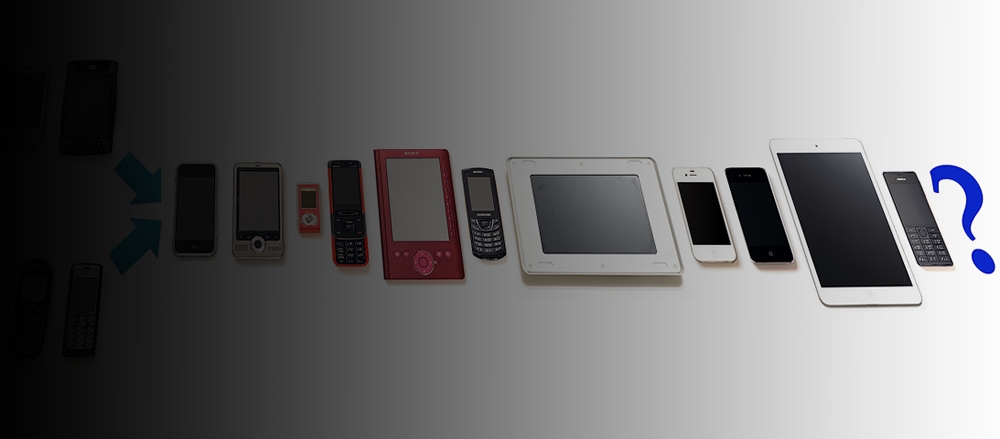
Recently I sorted things out and came across a box in which I store all my old electronic devices. I decided to write a post about them and, at the same time, trace the evolution of gadgets. Almost all of them are in working condition, only for some I had to search and buy a charge.
The post consists of two parts: a general “evolutionary” scheme and a description of the devices with their brief, most interesting from my point of view, parameters.
Part 1. Scheme of the "evolution" of my devices. This includes more or less mobile devices, desktop computers and consoles are not included.
1. The time period from 1987 to 2013 (26 years). As everyone remembers, initially communication devices and compact computers (and subcomputers) were separate devices and practically did not intersect with each other. But in the process of evolution of such devices, communicators (PDAs with phone functions) and smartphones (“over-telephone” with the operating system) began to appear. Well, now smartphones have almost completely replaced all other subspecies of mobile devices:

Part 2. A brief description of the devices with some of their performance characteristics.
2. Electronics MK-44 A
twelve-digit microcalculator powered by a network, designed to perform mathematical, economic and accounting calculations by unprofessional accountants. Performs four arithmetic operations, chain calculations, constant calculations, percent calculation, square root calculation, reciprocal calculation, sign reversal and memory operations.

3. Electronics MK-61
Programmable microcalculator with reverse Polish entry for engineering and scientific calculations. It belongs to the third generation of Soviet programmable calculators. Simplified modification of the calculator "Electronics MK-52" - differs from it by the lack of EPROM and the ability to work with memory expansion units (PDUs).
Display: 12-digit luminescent indicator (8 mantissa + 2 order + 2 categories of mantissa signs and order). For me, the coolness of this calculator was that you could play with it. It turns out that many different games were written, the text of which was published in magazines. Of all I remember, “Fox Hunting” and “Landing on the Moon”.

4. Electronics 54
These were my “adult” watches, which I bought when I was still in school. In total, they worked for twelve years. Simple, reliable and accurate.
Years of production: 1989 - 2005.
Daily course, no more: + -0.1sec.
Power supply: 1x SC-21.
Water Resistance: None.
Time display: 24 hours, minutes, seconds.
Hourly signal: yes.
Type of stroke correction: ЦНТХ
LCD backlight: yes.
Calendar: day, day of the week, month, year.
It has 4 alarms, one of which is set on the days of the week.
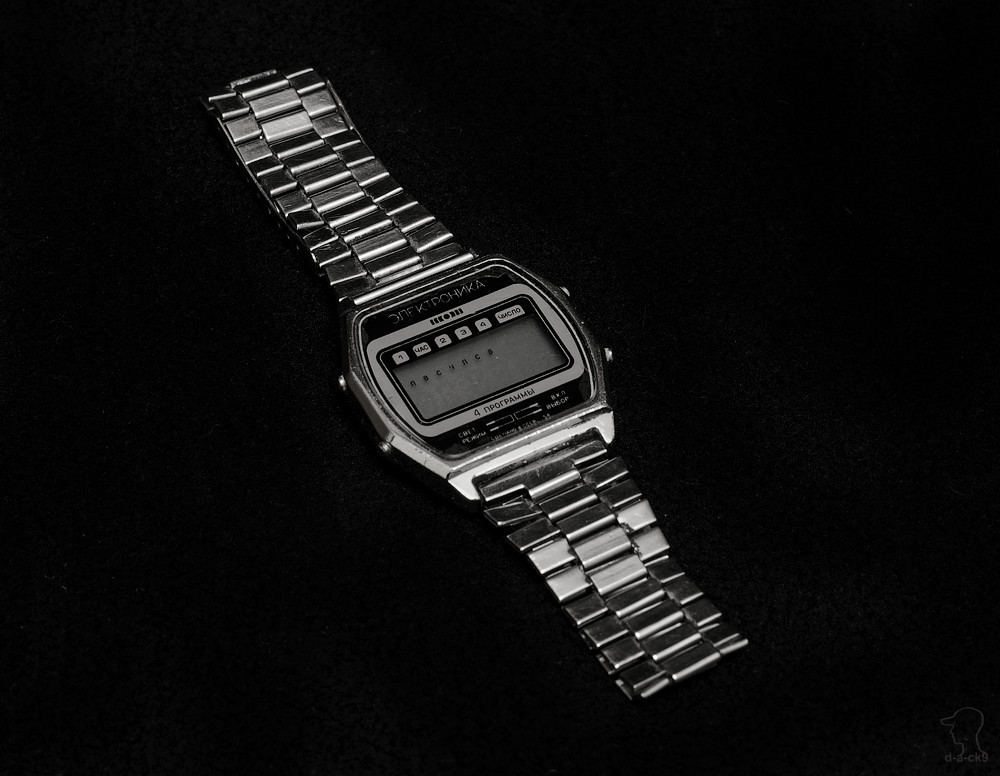
5. Citizen RX-5640
Electronic Notebook. They bought it for me at school. Used as a cheat sheet on the control, because it was a wonder, teachers perceived it as a tricked-out calculator and did not dig in. But in fact, I scored the formulas there)
64 Kb of memory.
Display: monochrome, three-line alphanumeric LCD with backlight and anti-glare protective coating (4 x 16 characters).
Functions: phone book, the ability to exchange information between two notebooks, a diary, a notebook, an alarm clock indicating the time in different zones, a calculator, calendar, converter, currency conversion function, secret (setting a password for the memory area). Address Book Capacity: Over 6,000 entries.
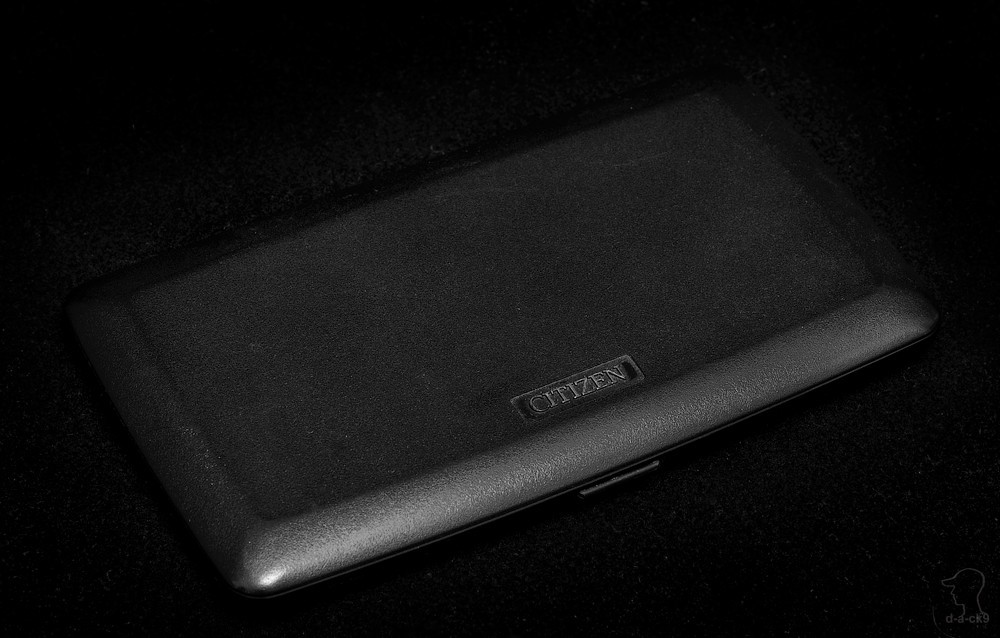
6. After entering the information, the entries are arranged in alphabetical order, and for a quick search of information of interest there is an accelerated search mode, using which you can find it by the first few letters you type. Of the additional functions there is an audible signal for pressing the keys (disconnected), adjusting the contrast of the display, checking the remaining memory capacity, a message about the battery replacement time, and automatic shutdown.
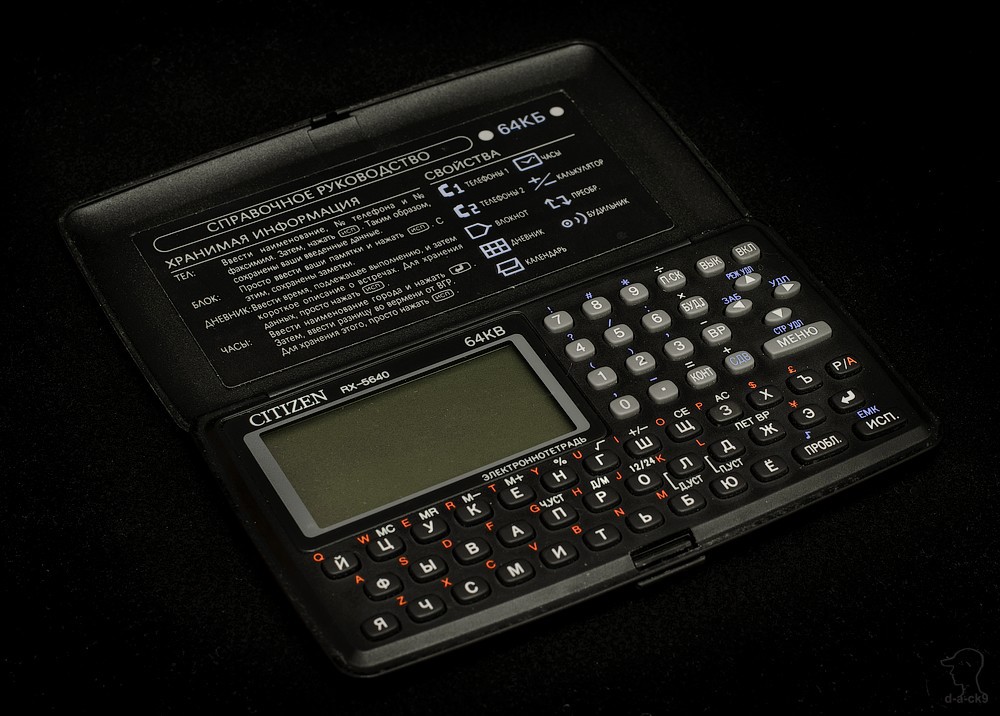
7. Pager "Apollo 812"
He appeared with me in 1998. At that time it was very cool, and most importantly, useful. Especially for a student living in a hostel.
Device parameters:
Display: 2-line. 21 characters per line.
Maximum message length: 500 characters.
Memory capacity: 8150 characters.
Save all messages when replacing the battery.
5 alarms.
Signals: 12 types of sound signals, vibration.
Backlight

A bit of history:
A pager is a small one-way communication device that displays short messages (no longer than SMS) on the display. Messages were sent to the device from the paging center, where operators typed them on a regular keyboard and sent them to the recipient. To send a message to a pager, it was necessary to call the operator on a certain phone, give the subscriber's number or his pseudonym and dictate the message. The operators of the paging networks did not accept messages with obscene words, much to the chagrin of the masses. But this did not stop the population, and then euphemisms like “6 la” appeared. It was also possible to indicate the time when this message needed to be sent. The operator sent the dialed message on the air, preceding it with a special code signal unique to each pager that caught the message intended for him,
The first paging devices appeared in the USA in the late 1920s. Legend has it that when the radio engineer Charles Niirgard was in the hospital, he was terribly bored with the intercom calls that they were looking for doctors. It was these loud calls that prompted him to come up with such a "quiet" connection. In the 30s, pagers were actively used by the police. A more modern version of the pager was created in England in 1956 by Motorola. In those years, the number of network subscribers could not be more than 57, and the radius of action did not exceed 200 m. Nevertheless, it was very useful inside hospitals, large offices, etc. Having appeared in the USSR at the end of the 70s, pagers did not become the property of the masses. They were mainly used by ambulance doctors. A spike in paging activity occurred at Olympics 80, when it was used by many services. But basically pagers have spread already in Russia since 1993. Perhaps two-way paging - taging - would allow pagers to live and develop further, but 1998 came. Then, having found themselves on the brink of ruin, mobile operators reoriented themselves from the middle class, which in Russia today the cat wept, to the bulk of the population. Mobile phones and tariffs began to quickly become cheaper. The last blow was dealt by the development of the SMS service. At the moment, paging communication is used mainly within some companies and in restaurants. on the bulk of the population. Mobile phones and tariffs began to quickly become cheaper. The last blow was dealt by the development of the SMS service. At the moment, paging communication is used mainly within some companies and in restaurants. on the bulk of the population. Mobile phones and tariffs began to quickly become cheaper. The last blow was dealt by the development of the SMS service. At the moment, paging communication is used mainly within some companies and in restaurants.
8. Siemens M35i
My first phone. It was bought new at the end of 2000 by an announcement in a well-known newspaper. Then, after payment and execution of the contract, you had to wait a few days, during which you were assigned and informed of the number :) A monolithic rubberized dust and moisture-proof casing ensured its operation in adverse conditions and protected it from shock. He flew with me many times, but this did not affect the functionality in any way. Once even the whole escalator flew down to Taganskaya :)
Standard: GSM 900/1800.
Display: monochrome 101 x 54 pixels, 5 lines x 16 characters.
Battery: NiMH 500 mAh.
Phonebook: 100 numbers in the phone’s memory + SIM-card memory.
WAP browser 1.1.

9. The instruction was in English:

10. Palm m105
This was my first PDA. I bought it in 2002. I saw this with my boss. After a desktop monster such a miracle became a revelation for me and a way into the world of mobile computers. With it, I discovered the electronic format of books. Because it was hard and uncomfortable to carry a paper book with you, and it was also unprofitable for a student to buy it once a week. Since then I have been reading almost all books only in electronic format. I used the Excel analog for course calculations. Then I had a full-fledged mobile Internet - when crossing a PDA with Siemens ME45 via infrared.
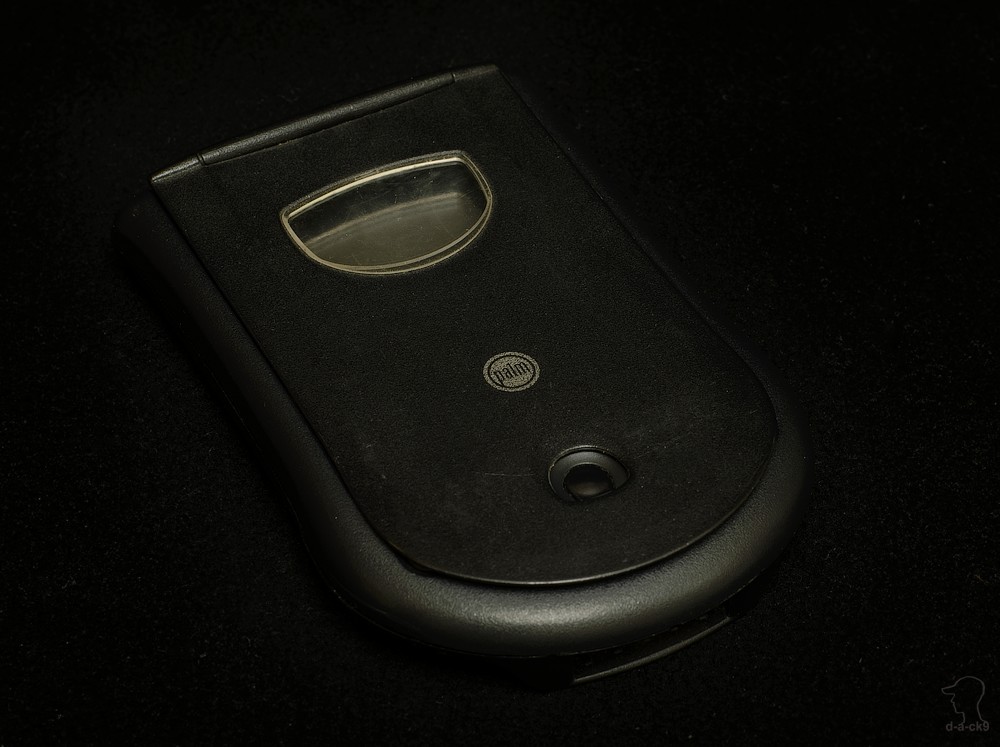
11. Has a very convenient input method: in the graffiti area, at the same time, each character has its own gesture for input, letters are entered on the left side, numbers on the right.
Display: 3 inches, 160x160, 16 shades of gray.
Processor: Motorola Dragonball EZ 16 MHz.
PalmOS 3.5.1
RAM 8 MB
ROM 2 MB
Infrared port, COM port.

12. Inverse green backlight.

13. Siemens ME45 A
cult phone. I went with him for a very long time. Beautiful design, very clean and loud sound and a protected case. For the first time, Siemens phones initially recorded settings for working with WAP and GPRS through Russian providers, in particular MTS and Beeline. The user is spared the need to independently set the necessary settings. It cost 330-350 dollars.
GSM standard 900/1800 MHz.
Display: 101x80 pixels, 7 lines of text with 16 characters each.
Battery: Li-Ion 840 mAh.
WAP 1.2.1.
GPRS class 8.
Infrared port

14. The instructions for it were already in Russian.
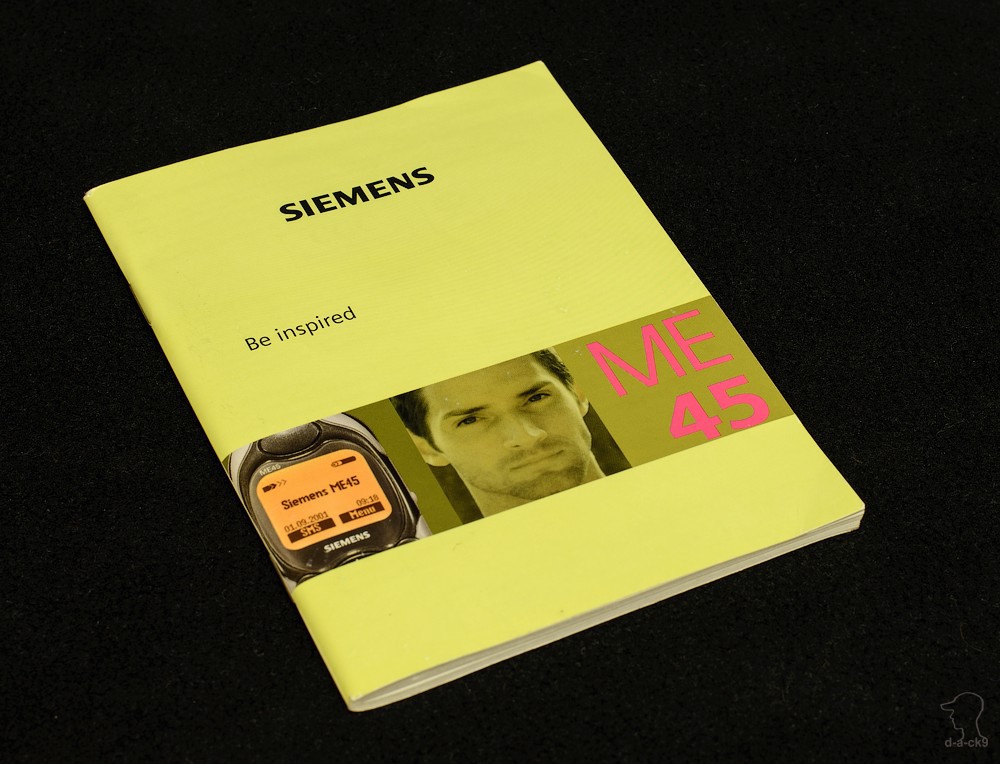
15. iPAQ 1940
The smallest PDA with Windows Mobile on board. It was with him that my acquaintance with Windows for mobile devices began. After the Palm m105 is out of date, I started looking for something to replace it with. I wanted a color screen and PalmOS on board. Long chose, could not decide. Dropped by Sony Clie. I decided to go see this PDA to the store. I walked there for a long time, I chose. I saw the iPAQ 1940 with WM, it struck me with its size and some kind of Windows in this small device, which did not even slow down much. So I switched to Windows mobile :)
Screen: 3.5 inches 240x320 pixels, 64K colors.
900 mAh Li-Ion
RAM 64 megabytes of RAM.
Processor: Samsung S3C2410 203 MHz.
Pocket PC 2003 (Windows CE 4.20)
Extensibility: SD / MMC with SDIO support, IrDA (SIR)
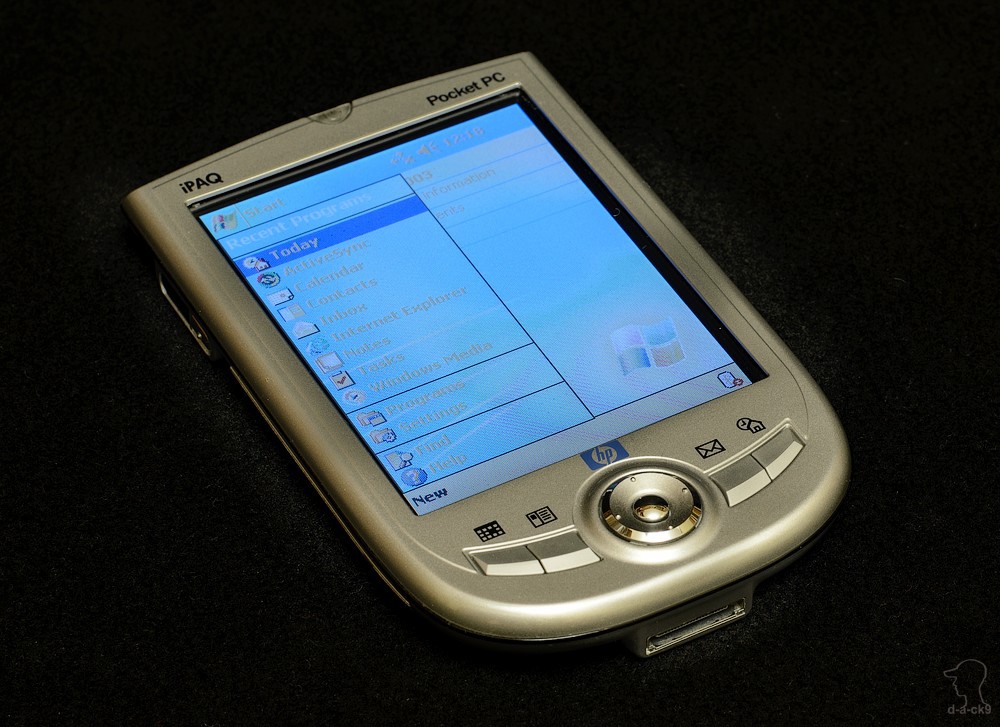
16. Sony Ericsson T630
This was my first phone with a color display and a camera. He also had a very convenient graphic menu with icons and a real little joystick.
Standard: GSM 900/1800/1900 MHz.
Battery: Li-pol 750 mAh.
Display: 65536 colors, 128x160 pixels, 6 lines of text, 2 service lines and 1 line with icons.
Built-in camera: 352 x 288 pixels.
32-voice polyphony.
2 MB of internal memory.
Phonebook memory for 510 numbers + SIM card memory.
WAP 2.0
GPRS (class 8)
Infrared port
Bluetooth v1.0b

17. And also, the company produced beautiful stylish accessories for its phones.
Sony Ericsson MPF-10 - LED flash and flashlight with control buttons. Comes in a very stylish case.
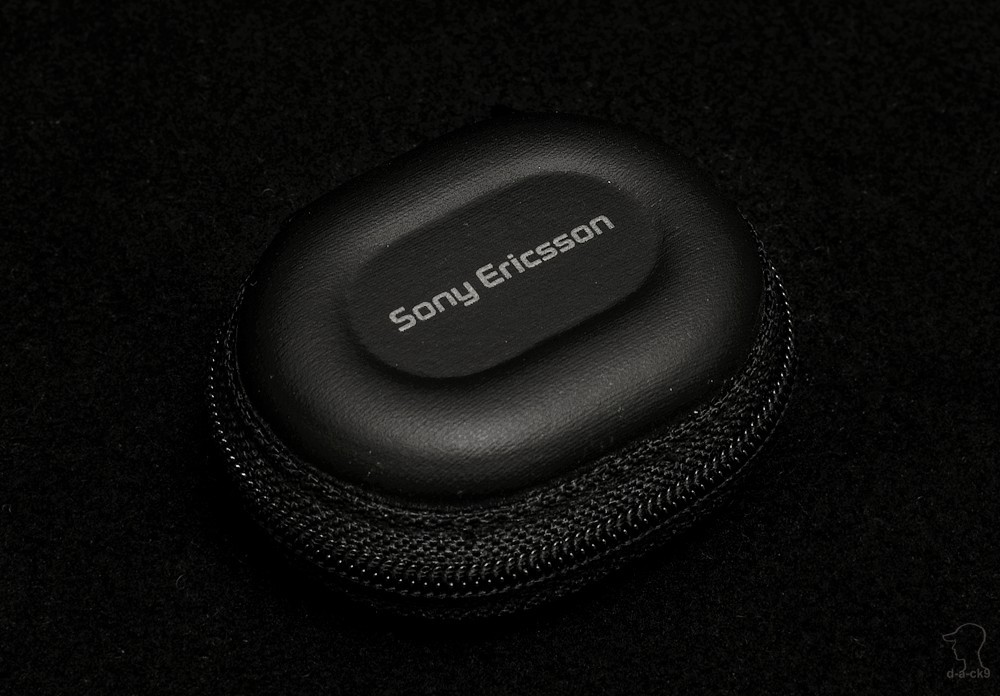
18.

19.

20.

21. Bluetooth-machine Sony Ericsson CAR 100. Its length is about 5 cm. It was charged from the phone’s battery and controlled from it. It cost about 100 USD. As soon as the phone connected to the typewriter, its keyboard becomes a control panel. You can steer left / right, go forward (there were 2 speeds for this) and back. I did not like gluttony - 15 minutes of charging is not enough for several minutes of driving and you can charge the machine only directly from the phone, and not from the charger.
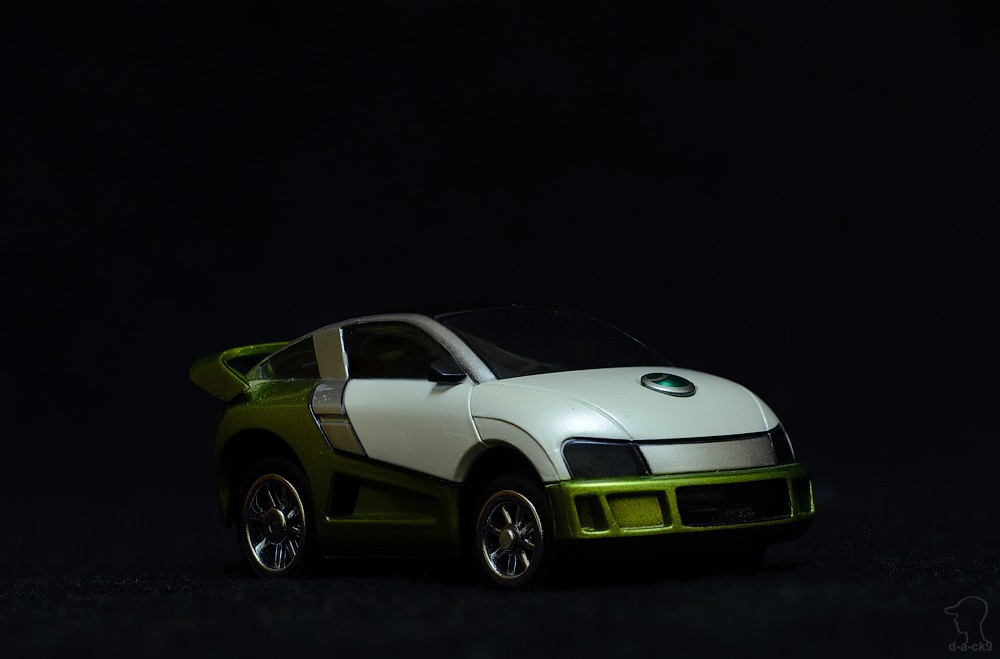
22.23

.iPAQ hx4700
This is a real monster. It had everything you could dream of: the best screen among all PDAs, the most capacious battery, a metal case, a full range of communication capabilities, a touchpad. Touchpad instead of joystick is a controversial decision, uncomfortable in games, but I did not care, because I didn’t play toys. A huge amount of custom firmware was collected for him. Having bought an external GPS-receiver with bluetooth, he turned this PDA into an excellent navigator with a large display and a fairly high resolution.

24. Processor: Intel ® PXA270 624 MHz.
RAM 64 MB
ROM 128 MB (80 MB available to the user)
Windows Mobile 2003SE
Windows Mobile 5
Screen: 4 inches (active area: 61x81 mm) 640x480 pixels, 65 thousand colors.
Wi-Fi 802.11b, Bluetooth and infrared
Extensibility: SD / MMC slot (SDIO support), Compact Flash Type II, IrDA (SIR / FIR), Bluetooth 1.2, Wi-Fi, USB 2.0 client (charging, synchronization).
Touchpad
Battery: Li-Ion 1800 mAh.

25. iPhone 2G
Fall of 2007. And finally, I saw a device that organically combined a PDA and a phone. A work colleague “hooked” me on the iPhone. It was a revolution and a revolution in worldview. I bought a “gray” in the fall of 2007, then unlocked it and did a jailbreak. Since then, I felt all the charms of a full-fledged on-screen keyboard and “poking” with your finger, not with a stylus. Since then, I can not use push-button phones to dial SMS.
Screen: 3.5 inches (89 mm) LCD TFT with LED backlight, 320x480.
Standard: GSM 850/900/1800/1900 MHz.
Wi-Fi (802.11 b / g).
Bluetooth 2.0
USB 2.0
Processor: Samsung S3C6400 ARM 620MHz.
RAM 128 MB.
Battery: Li-pol 1400 mAh.
Camera: 2 MP
Compatible media formats: AAC, MP3, M4A.

26. Asus MyPal A686
After I got an iPhone 2G, I only lacked GPS in it. For navigation, I had to drag a bunch of iPAQ hx4700 + bluetooth GPS receiver with me. Over time, the hx4700 began to very quickly drain the battery (although I changed it to a new one) and it could only be used in the car, due to the presence of constant power. Yes, and constantly connect this bunch tired. I began to think about the navigator built into the PDA. I chose the Asus MyPal A686 because of the price. It’s not bad for general navigation, but the launch time (both cold and hot turned out to be huge), positioning accuracy and the frequent loss of satellites were very annoying.
Battery: Li-Ion 1200 mAh.
Intel XScale PXA270 312 MHz.
256MB Flash ROM (77.65 MB available to the user for data storage, program installation), 64MB SDRAM.
SDIO / SD / MMC, Bluetooth 2.0, USB 1.1 for charge / sync, IrDA.
GPS chip SiRF Star III
Microsoft Windows Mobile 6 (CE 5.2).
Screen: 3.5 inches (70x52 mm - active area) 320x240 pixels, 65 thousand colors.

27. Safa SR-850F MP3 player
A good player for your money with a curve Russification. It’s not even a player, but an all-in-one microcombine: it had an audio input, an audio output, an external speaker, a radio, a jpeg image viewer, a book reader, a clock, a calendar, the ability to record from the built-in microphone, line input, radio.
Display: 1.5 inches 128x128.

28. Nokia 5610 XpressMusic
Media Combine, which, after the end of the warranty, frayed a cable leading to the display. Repairing was impractical.
Standard: 850/900/1800/1900 MHz.
Battery: 900 mAh
Display: 2.2 inches 240 x 320, 16 million colors.
The amount of non-volatile memory: 20 MB.
Support for memory cards: microSD.
Bluetooth 2.0
Camera: 3.2 MP, 2048 x 1536.
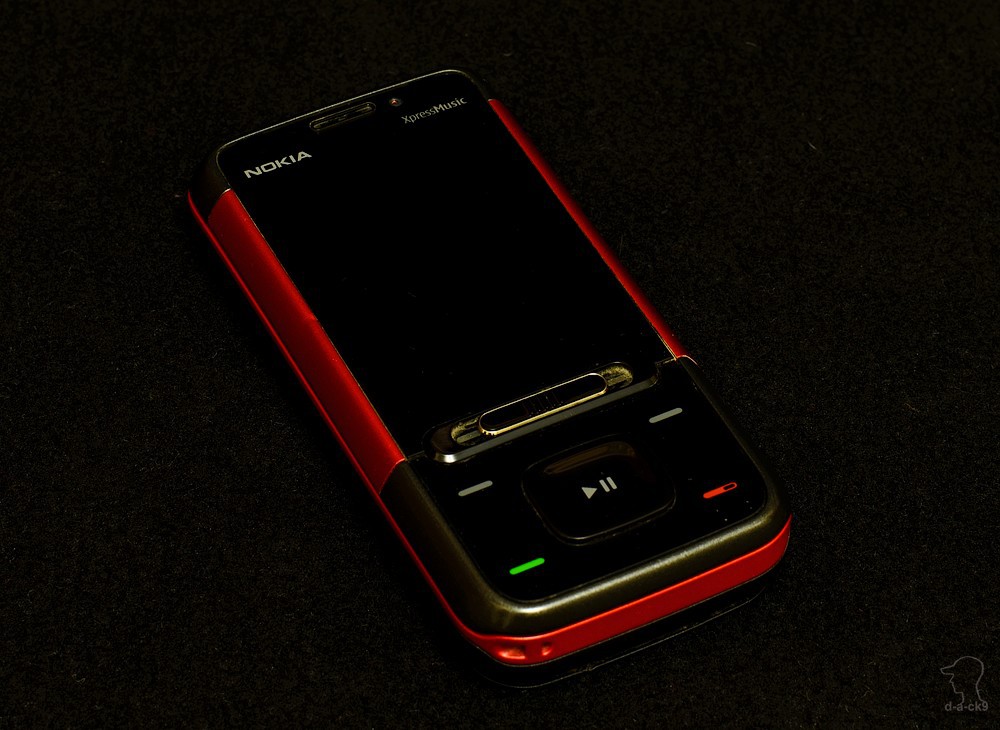
29.

30. Sony PRS-300 Pocket Edition
A very high-quality reader, which was not officially delivered to us. I can’t say anything bad, she didn’t have any additional functions, and she performed (and still does) her main one perfectly.
Display: E-Ink, Vizplex, 5 inches 600x800, 8 gradations of gray.
Built-in memory 512 MB (440 MB available to users).

31.

32. Samsung GT-C3200
Nothing more, the simplest phone for ridiculous money, reliable and buggy, is used as a fallback.
Standard: 850/900/1800/1900 MHz.
Screen: 2 inches 240 x 320, 262144 colors.
Built-in memory: 40 MB.
Support for flash cards: microSD.
Address Book: 1000 numbers.
Bluetooth 2.1.
GPRS class 10.
Camera: 2 megapixels 1600 x 1200.
Battery capacity 1000 mAh.

33. Digital photo frame LG PF351P
Just a frame, without any glitches display all supported formats. Bright colorful display, but viewing angles are very small.
Display: 8 inches 800x480, format 15: 9.
Built-in memory: 256 Mb.
Support for memory cards: Secure Digital, MultiMedia Card, Memory Stick.
USB stick support.
Supported JPEG formats MP3 MPEG4 AVI, MOV.
Built-in clock, alarm clock, calendar.
Replaceable panels.

34. iPhone 4
Finally, an all-in-one device suits me. And I got rid of the already buggy Asus MyPal A686.
Screen: 3.5 inches (89 mm) LCD TFT 640x960.
Wi-Fi (802.11 b / g / n).
Bluetooth 2.1.
Standard: GSM 850/900/1800/1900 MHz.
Processor: Apple A4 (ARM Cortex-A8).
Graphics: Apple A4 (PowerVR SGX 535).
512 MB RAM
Battery: Li-pol 1420 mAh.
5 MP camera.
Front camera: 0.3 MP (VGA)
Location tools:
GPS with Assisted GPS technology
Digital
Wi-Fi
3G compass - by identifiers of cell towers and the strength of their signals
Sensors:
Three-axis gyroscope
Accelerometer
Distance
sensor Ambient light sensor
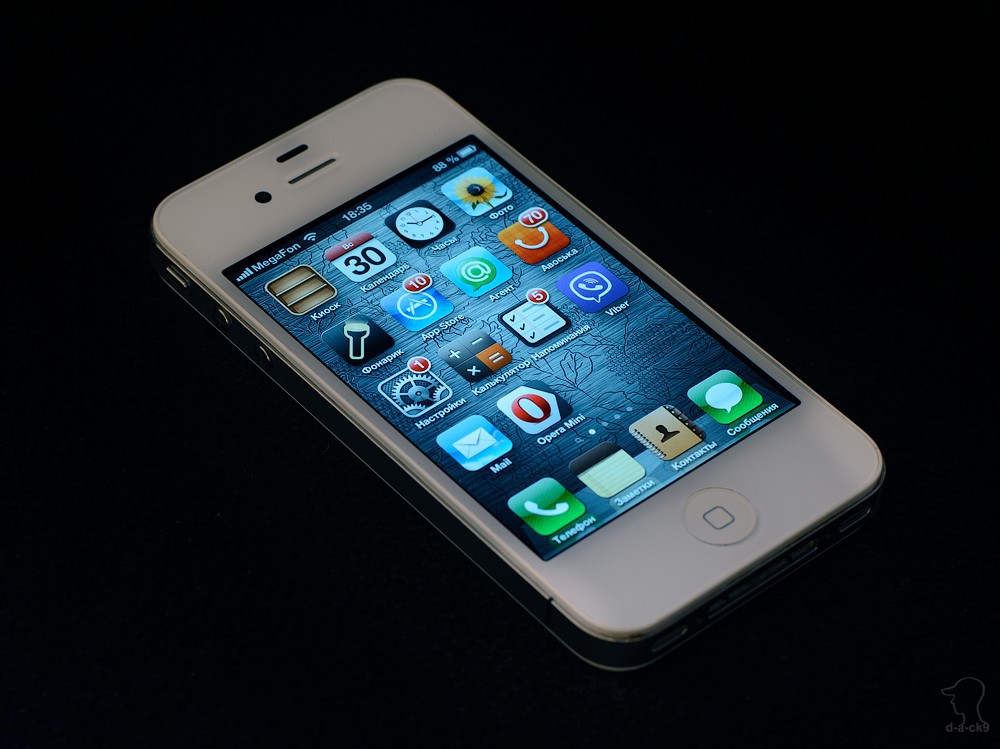
35. iPhone 4s
I still sit on this phone. Because I don’t play toys, it suits absolutely everything: speed, amount of memory, camera. The perfect all-in-one device.
Wi-Fi (802.11 b / g / n).
Standard: GSM 850/900/1800/1900 MHz.
Bluetooth 4.0
Processor: Apple A5, 800-1000 MHz.
RAM 512MB
Camera 8 MP.
Location Tools:
GPS (with Assisted GPS technology) and GLONASS Wi-Fi 3G
digital compass - by identifiers of cell towers and the strength of their signals. 36. iPad Mini Wi-Fi (802.11a / b / g / n). Bluetooth 4.0 LTE (frequency band 4 and 17). GSM / EDGE (850, 900, 1800, 1900 MHz) Display: 7.9 inches, IPS-matrix with LED backlight 1024x768. Processor: Apple A5 (2 processing cores, integrated graphics accelerator). Camera: 5 megapixel F2.4 lens of 5 lenses. Front camera 1.2 MP. Sensors: 3-axis gyroscope Acceleration sensor (accelerometer) Light level sensor Current location:
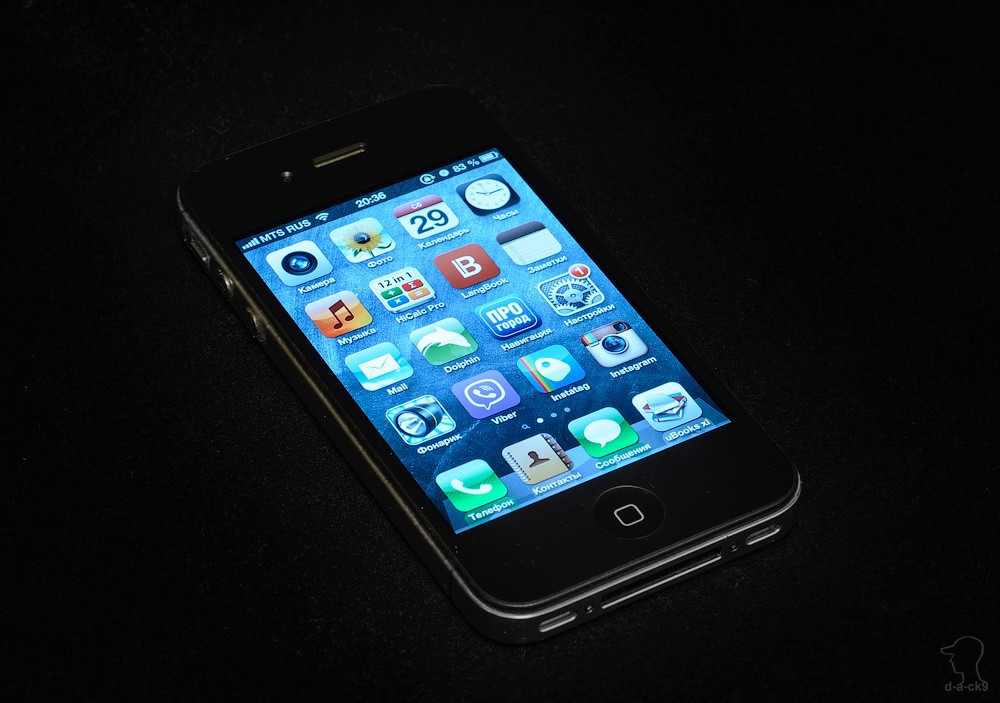
Wi-Fi triangulation
Digital compass
Assisted GPS and GLONASS
Cell triangulation.

37. Nokia 515
Just a work phone.
Standard: 850/900/1800/1900 MHz.
Display: 2.4 inches QVGA (320 x 240).
Camera: 2592 x 1944 MP.
USB 2.0, USB storage device
Bluetooth: 3.0
Support for memory cards: microSD.
Ringtones: 32-voice polyphonic.
Battery: 1200 mAh.

I don’t want to change anything else, because there are no prerequisites for the mobile revolution. Manufacturers are moving towards increasing everything: the number of cores, megapixels, screen sizes, etc. In addition to one - battery capacity. I don’t see anything essentially new in devices now, therefore I will not change iPhone 4S for anything else in the near future. The exception is if they create something fundamentally new and revolutionary. But, as I indicated above, I see no prerequisites for this.
Information taken from wikipedia.ru
